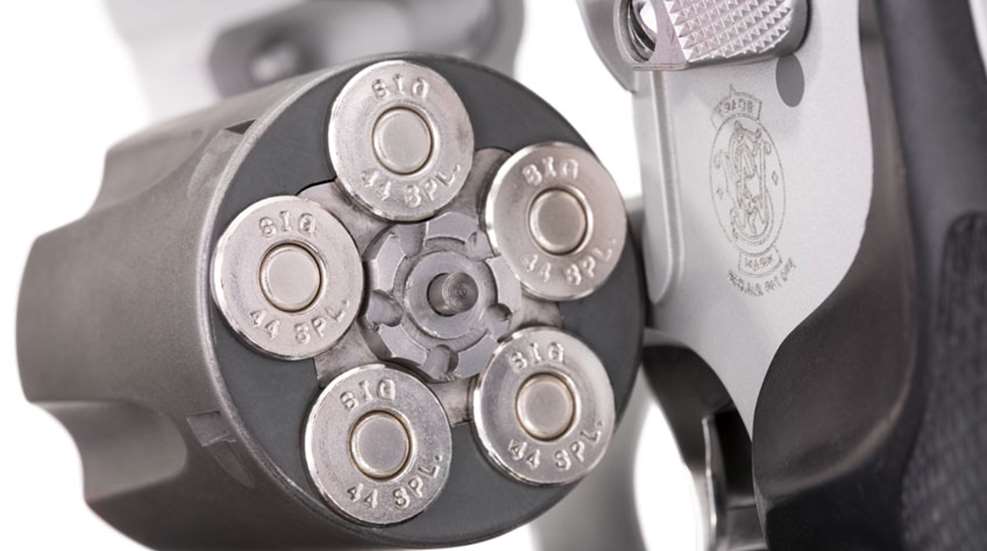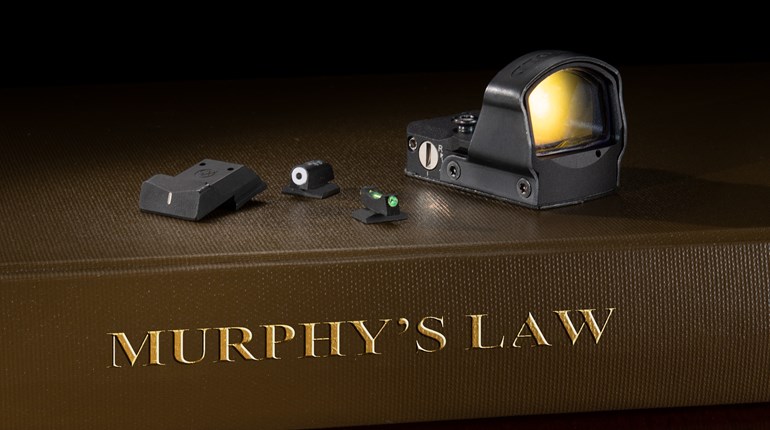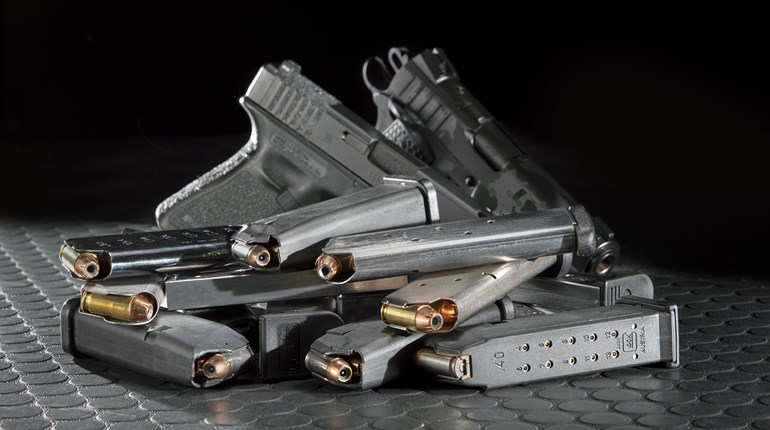
I have a confession to make: Against all ballistic reasoning and everything I know about defensive-handgun use, I still have a completely illogical attraction to small-frame revolvers in calibers whose numbers begin with the number four. I think it started back in the early 1990s, when we got an unfired Charter Arms Bulldog in .44 Spl. on trade at the shop where I then worked.
At the time, the only revolvers I’d ever owned were a reproduction Civil War-era percussion Colt and a long-barreled Ruger Blackhawk in .45 Long Colt, so it’s not like I was any kind of wheelgun fan. I mean, the main reason I owned the Blackhawk in the first place was to load it with snap caps and use it as a sort of “fidget spinner for adults” while watching Westerns.
That Bulldog exerted a powerful fascination over me, however. There was just something about that diminutive little revolver with the great big charge holes in the cylinder. Of course, I wound up buying it.
That first experience with a tiny big-bore revolver was definitely a mixed one. I liked the whole concept, but the ammunition selection in .44 Spl., back in the days before Cowboy Action Shooting helped revive a bunch of older calibers, was pretty grim. What we carried at the shop that was affordable on my retail clerk wages was 240-grain jacketed soft points. I want to say they were PMC, but I’ve slept since then—and I recall those as being loaded a little on the warm side.
A few cylinders in rapid succession would cause the cylinder-latch screw to fall out and have me on my hands and knees looking for the cylinder latch on the floor under the lane tray. Also, that much powder burning with that little amount of gun to serve as a heat sink turned the cylinder blistering hot in a short amount of time. Several hundred rounds of the stuff caused the gun to start to get noticeably rattle-y, and I traded it away.
I just couldn’t leave that itch unscratched, however, and almost immediately wound up with a second-hand Rossi 720 Covert, another small five-shot .44 Spl. Unlike the regular Rossi 720, the Covert had a bobbed hammer spur and fixed sights for a no-snag draw, and a full-length ejector rod beneath its 3-inch barrel for positive ejection of spent cases. Also, a shroud around the ejector rod protected it from getting bent.
However, my relationship with the Rossi was somewhat star-crossed, as well. The problem again likely stemmed from ammunition selection, that same 240-grain jacketed soft-point load.
In this case, the tolerances of the Rossi were just that much tighter than those of my previous Charter Arms, and—remember how I mentioned how the cylinders on these little guns would get blisteringly hot after a few quick strings of fire? Well, in the case of my 720C, when it got hot enough it stopped wanting to turn. The double-action trigger pull would go from really pretty nice, to sort of heavy and draggy, to the gun being locked up and the cylinder needing to be beaten open with a mallet, all in the space of a hundred rounds or so.
What I learned from these experiences was that hot-loaded 240-grain .44 Spl. ammunition may have made Elmer Keith famous when loaded in large-frame sixguns, but it just didn’t mesh well with tiny little five-shooters. The same gun that was a fussy handful with the 240-grain ammo was a completely normal revolver, dully reliable, when fed 200-grain ammunition from Federal Premium or Winchester.
When I replaced my Rossi 720, it was with a Smith & Wesson Model 296Ti. This was yet another five-shot .44 Spl. but, as far as CCW-friendly features went, it one-upped the Rossi Covert in a couple crucial ways.
Firstly, it featured an aluminum-alloy frame and a titanium cylinder. In other words, despite being a big-bore L-frame revolver, it was lighter than a steel J-frame .38 Spl. Secondly, it had a fully enclosed double-action-only hammer—what Smith calls a Centennial—for truly snag-free operation from a pocket or purse.
Unfortunately for the 296Ti, the Centennial-profile frame that looked normal on a J-frame made the larger L-frame look like Quasimodo, the Hunchback of the Revolver Case. The gun was only in production for a couple of years before being discontinued for homeliness, which of course ensured it’s a wildly popular cult collector’s item today.
I still have my own 296Ti. It gets shoved into the CCW pocket of pretty much any purse or satchel I carry, due to its light weight and no-snag, shrouded hammer profile.
One thing that I did learn from the Smith & Wesson five-shooter is that my earlier hunches with the 720 and the Bulldog were probably close to being on the money.
See, right on the side of the still-odd-looking Smith & Wesson 296’s barrel is inscribed the warning “MAX BULLET 200 GRAINS.” As it turns out, heavier bullets (and the charges required to launch them) can cause these lightweight guns to turn into kinetic bullet pullers, with unfired rounds in the cylinder jumping crimp preventing cylinder rotation, among other problems.
So why do I still carry this gun when I need to be fussy about the ammo I feed it and maintain proficiency with its DAO trigger?
Well, it’s true that in the years since I first acquired it, my faith in the magical powers of the .44 Spl. cartridge may have waned—at least in my head.
In my heart, though, there’s nonetheless a reassurance associated with rounds that go TUNK instead of tink when you drop them into the cylinder. If a bit of mental confidence in one’s carry gun is what it takes to get the winning edge, then it’s hard to deny that.
Besides, just like sticking a V8 engine in a Miata, what could be cooler than cramming a big-bore cartridge in a smallish revolver? Sometimes being cool is all the reason something needs.





































